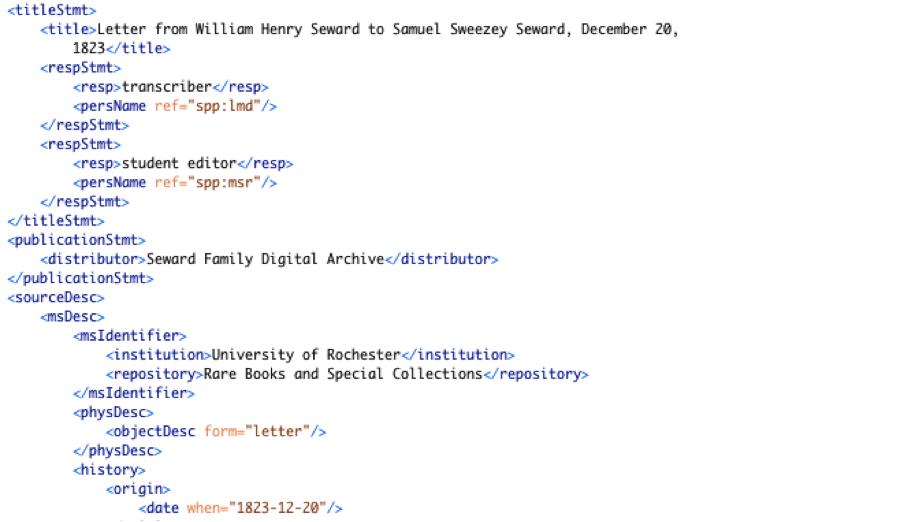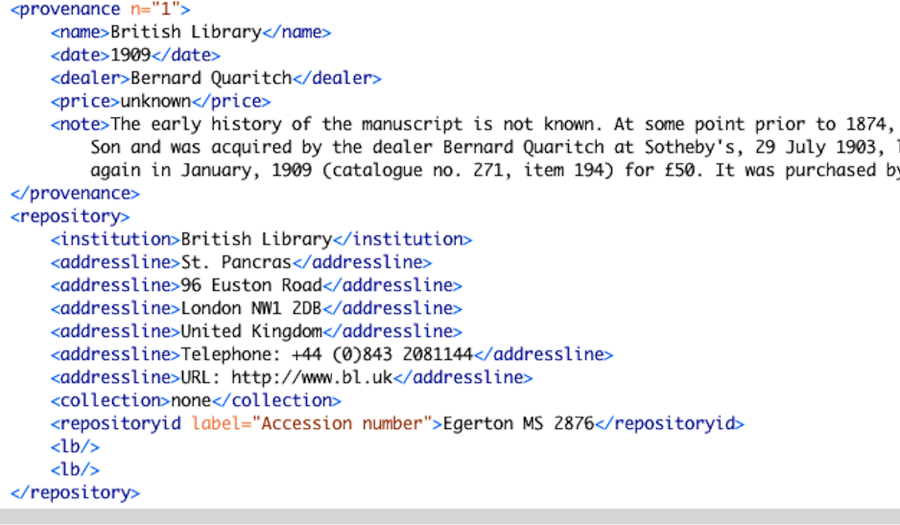As part of my duties as an Andrew W. Mellon Fellow in the Digital Humanities, I am required to serve as a Research Assistant for one of the many digital humanities projects at the University of Rochester. I was drawn to the William Blake Archive for several reasons. First, the Archive is a foundational DH project. Its depth and multi-institutional workflow serve as a model for onlookers hoping to recreate a successful digital collaboration. Selfishly though, I was also drawn to the William Blake Archive with an intent to gain more experience in XML, TEI, and digital-documentary editing. I hoped to adapt elements of the William Blake Archive for a more recent digital project ongoing at the University of Rochester, the Seward Family Digital Archive.
For the past three years I have served as the TEI and Technologies Manager for the Seward Family Digital Archive — a digital, documentary-editing project centered on the family correspondence of prominent nineteenth-century politician and diplomat, William Henry Seward. The Seward Family Digital Archive began in 2013 as a collaborative project between the Department of Rare Books and Special Collections, the Digital Scholarship Lab, and the Department of History at the University of Rochester. The initial focus of the project was to digitize, transcribe, annotate, and publish several thousand letters between members of the Seward Family. Additionally, using the connectivity of TEI, we created a network of correspondence based on the XML tags of people, places, and bodies of literature mentioned within the letters.
In my current role with the Seward Family Digital Archive I am responsible for adapting our current TEI Guidelines as the project changes in scope and materials. Currently, the header of the XML document is used to designate title of the object, its holding repository, as well as the sender, recipient, and creation date assigned to each piece of correspondence. The following image demonstrates the current structure of the header in each XML document.

Until recently, the Seward Family Digital Archive has only relied upon materials from one collection in the Department of Rare Books and Special Collections, the Family Papers. However, in recent months managers of the project discussed expanding the scope of the Seward Family Digital Archive to include correspondence currently held in William Henry Seward’s political and business papers. Because of this shift, our TEI guidelines will have to adapt in order to accurately represent each object’s archival and collection information.
Looking to established digital-documentary projects such as the Blake Archive, I found options for the future direction of the Seward Family Digital Archive’s TEI guidelines. During my time with the Blake Archive I was tasked to clarify, organize, and revise the provenance of William Blake’s receipts in preparation for future publication. The assignment seemed serendipitous given the needs of the Seward Family Digital Archive. Over the course of the semester, I was astonished with the level of specificity wrapped into every aspect of the Blake Archive’s object description. Seemingly every aspect from the archival location of the manuscript to the size of the object is recorded, encoded, and published alongside the digital reproductions. After several weeks of becoming familiar with the structure and level of detail built into the Blake Archive’s TEI structure, I began the task of grouping each receipt, or object, based on holding repository and its history of acquisition. The screenshot below demonstrates the structure currently in place. In Tiriel (1789) the provenance and repository information is clearly outlined.

Although the descriptions of the individual objects do not reside in the header of the XML file, as they do in the Seward Family Digital Archive, the Blake Archive’s structure provides a helpful framing mechanism for the Seward Archive. As the Seward Family Digital Archive begins to expand its scope beyond the Family Papers, the project’s XML documents will borrow structural elements from the Blake Archive to improve accuracy and specificity of individual manuscript items.
Overall, my time with the William Blake Archive was both intellectually stimulating and deeply informative. Observing the practices and procedures that go into the publication and maintenance of the William Blake Archive have prompted new conceptual ideas for the future development of the Seward Family Digital Archive. That should be no surprise, though. The depth and detail of the project’s TEI practices attest to the project’s longstanding reputation as a model for digital-documentary editing.
